Posts Tagged ‘innovation’
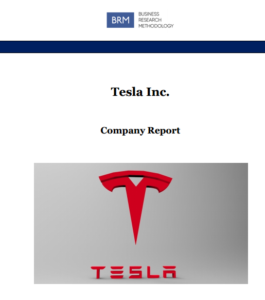
Tesla Inc. (formerly Tesla Motors Inc.) is an alternative fuel vehicles manufacturer founded in 2003 by Martin Eberhard and Marc Tarpenning in Palo Alto, California, USA. The company produces fully electric vehicles, energy generation and storage systems and also installs and maintains such systems and sells solar electricity. Tesla’s mission statement is ‘to accelerate the world’s transition to sustainable energy’. The electric automaker operates stores and galleries in the US and 35 other countries worldwide and employs more than 70,500 people globally. In 2020, Tesla achieved operating margin of 6,3% which is the highest in the industry. The electric automaker had an operating cash flow less capex (free cash flow) of USD 2.8 billion during the same period. In the last quarter of 2020 alone, Tesla had USD 4.9 billion increase in cash and cash equivalents. Free cash flow during the same period reached USD 1.9 billion. Tesla business strategy integrates focus on electric cars and ownership of distribution of products. Moreover, the company stresses the low cost of ownership of Tesla electric vehicles as one of the solid bases of its competitive advantage. The alternative fuel vehicles manufacturer has a divisional organizational structure and its divisions include energy, engineering and production, HR and communications, legal and finance, sales and software. Tesla organizational culture, on the other hand, is associated with ambitious innovation, adherence of First Principles method of decision making and lack of bureaucracy throughout the company. Tesla possesses a set of competitive strengths. These include the first mover advantage, increasing numbers of vehicles sales, expertise in innovation and a high level of brand recognition at an international level. At the same time, there are certain issues that cast a doubt over long-term growth prospects of the electric automaker. These points of concern for Tesla include overly expensive price…
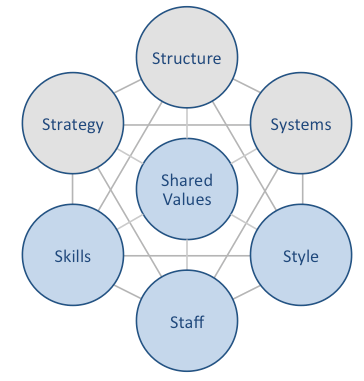
Xiaomi McKinsey 7S model illustrates the ways in which seven elements of businesses can be aligned so that overall effectiveness can be increased. According to the framework strategy, structure and systems are hard elements, whereas shared values, skills, style and staff are considered as soft elements. McKinsey 7S model stresses the presence of strong links between elements in a way that a change in one element causes changes in others. As it is illustrated in figure below, shared values are positioned at the core of Xiaomi McKinsey 7S model, since shared values guide employee behaviour with implications in their performance. Xiaomi McKinsey 7S Model Hard Elements Strategy. Xiaomi business strategy is based on cost leadership. Company’s business strategy also integrates gathering and utilising a large fan base and aggressively increasing the ecosystem of products and services. Moreover, Xiaomi positions itself as an internet and software company rather than a hardware company. Accordingly, the sales of hardware are perceived as a means to deliver software and services in the long-term perspective. Structure. Xiaomi has a matrix organizational structure. The electronics and software company has various business units that are managed independently. Xiaomi organizational structure can also be also classified as flat. Despite its large size employing more than 18000 people in 70 countries, the company has only a few layers of management. Systems. Xiaomi’s business depends on a wide range of systems such as employee recruitment and selection system, team development and orientation system and transaction processing systems. Moreover, there are critically important systems for the company such as customer relationship management system, business intelligence system, and knowledge management system. The mobile internet company aims to increase the efficiency of these and other systems via the integration of internet-based information technologies. Xiaomi Inc. Report contains a full analysis…
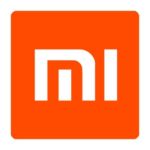
Xiaomi marketing communication mix explains the extent of usage of individual elements of marketing communication channels by the mobile internet company. Generally, elements of the marketing communication mix consist of print and media advertising, sales promotions, events and experiences, public relations, direct marketing and personal selling. Xiaomi Print and Media Advertising “Xiaomi once touted its avoidance of advertising as one of the keys to its early success—saving money on commercials helped keep the overall price of the phones lower. Instead, it relied on its upper executives and its “fans” to spread the word and attract new customers through social media.”[1] However, due to increasing competition from its local rivals Oppo and Vivo, The mobile internet company had no choice but to engage in certain forms of traditional advertising such as posters and newspaper advertising. Nevertheless, viral marketing remains as the most important form of marketing for Xiaomi. The internet technology company also uses celebrity endorsement from the likes of top Hong Kong actor-singer, Tony Leung, a 54-year-old best-known to English-speaking audiences for movies like “In the Mood for Love” and “Lust, Caution.”[2] Xiaomi Sales Promotions Xiaomi uses the following sales promotions techniques: Flash sales. Flash sales refer to sales of products and services online at a heavily discounted price for a short period of time. Xiaomi uses flash sales extensively, especially in India. Customer Loyalty Scheme. Reward Mi is a customer loyalty program that rewards loyal customers with exclusive benefits such as priority passes a.k.a F-codes and discount coupons which can be redeemed on selected products across Mi Store.[3] Seasonal sales promotions. The electronics and software company announces sales promotions on notable occasions as Christmas day and anniversaries of notable days for the company. Point of sale materials. The company uses point of sale materials such as posters and…
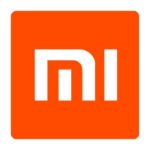
Xiaomi marketing strategy has been traditionally minimalistic due to the cost leadership business strategy pursued by the company. Accordingly, the mobile internet company only engaged in social media marketing, saving on advertising costs and passing this cost advantage to customers in the forms of products with low price tags. However, “Oppo and Vivo have grown in China by using the exact tactics that Xiaomi once avoided. Both companies spend heavily on offline advertisements and celebrity endorsements, plastering billboards on subways and bus stops across China’s second- and third-tier cities.”[1] This has caused a shift in Xiaomi marketing strategy and starting from lately the internet technology company has started to use traditional marketing communications channels as well. Moreover, Xiaomi marketing strategy nowadays also includes product placements and Xiaomi holograms in fiction triller Anon (2018) can be mentioned as an example. As s privately-owned company, Xiaomi does not disclose its annual marketing budget. Xiaomi 7ps of marketing focuses on price element of the marketing mix to a greater extent compared to other elements. Accordingly, the brand’s target customer segment represents price-conscious consumers who want to own the latest smartphones with advanced functions and capabilities for affordable cost. Hunger marketing strategy is one of the integral components of Xiaomi marketing strategy. The electronics and software company appeals to emotional needs of their target customer segment by selling only limited amount of products for a limited duration of time. In other words, the company creates the shortage of supply in purpose, creating a buzz in the market and evoking desire in customers to own a MI brand smartphone. Xiaomi Inc. Report contains a full analysis of Xiaomi marketing strategy. The report illustrates the application of the major analytical strategic frameworks in business studies such as SWOT, PESTEL, Porter’s Five Forces, Value Chain analysis, Ansoff Matrix…
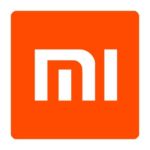
PESTEL is a strategic analytical tool and the acronym stands for political, economic, social, technological, environmental and legal factors. Xiaomi PESTEL analysis involves the analysis of potential impact of these external factors on the profitability and long-term growth prospects of the mobile internet company. Political Factors in Xiaomi PESTEL Analysis There is a wide range of political factors that can affect the internet technology company. These include government stability, bureaucracy, corruption, freedom of press and others. On one hand, Xiaomi has benefited from political factors in China in general and protectionism policy of Chinese government in particular. The government of China protects local technology companies such as Tencent, Baidu and Xiaomi by imposing barriers to operate in the country to their international rivals such as Facebook, Twitter, Snapchat, YouTube and Google. The head of Xiaomi, along with the heads of Tencent and Baidu advice the government on international business policies.[1] This grants technology companies enviable opportunities to influence local political factors that affect their businesses to a certain extent. Xiaomi has even set up its Communist Party Committee in 2015[2] as a display of its support for the ruling government. On the other hand, while political factors benefit Xiaomi in its home market in China, the company is usually negatively affected from political factors outside of China. For example, the Taiwanese government has investigated Xiaomi on a cyber security threat in 2014 causing certain damage to the brand image of the company. There is a popular concern that the investigation was politically motivated because “China and Taiwan have been historical foes since defeated Nationalists fled to the island after losing a civil war to China’s Communists in 1949”.[3] Economic Factors in Xiaomi PESTEL Analysis Economic factors affecting the internet technology company are diverse. These include macroeconomic climate in the country,…
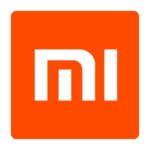
In business context, SWOT acronym stands for strengths, weaknesses, opportunities and threats associated with the company. The following table illustrates Xiaomi SWOT analysis Strengths 1. Efficient leadership by Lei Jun 2. Impressive growth rate 3. Cost advantage 4. Brand value estimated at USD 100 billion[1] Weaknesses 1. Low profit margin 2. Lower smartphone capabilities and functionalities compared to major competitors such as Apple and Samsung 3. Competitive advantage difficult to sustain 4. Lack of experience in the global marketplace Opportunities 1. Increasing presence in cloud segment 2. Formation of strategic collaborations 3. Focusing on marketing strategy 4. Achieving a disruptive innovation in the industry as a result of research and development Threats 1. Market saturation in smartphone industry 2. Increase in the costs of resources 3. Issues with product functionality 4. Emergence of CSR-related scandals Xiaomi SWOT analysis Strengths in Xiaomi SWOT Analysis `1. Xiaomi co-founder and CEO Lei Jun is an effective business leader named “Businessman of the Year” 2014 by Forbes Asia. Dubbed the ‘new Steve Jobs’, Lei Jun is perceived as the face of China Inc, along with Alibaba Founder Jack Ma.[2] Moreover, it is said that Lei has never yelled at his staff. When he encounters a problem, he just smiles and gets down to business, and tries to find a solution. In social gatherings, Lei is always a good listener.[3] Efficient and visionary leadership style is one of the major factors behind the phenomenal growth of the internet technology company. 2. The electronics and software company has enjoyed an impressive growth rate since its foundation in 2011. In Q4 2017, Xiaomi became the world’s No.4 in terms of quantity of shipments. Despite the decline of 6,3% in the global smartphone market, Xiaomi managed to maintain a year-on-year growth of 96.9%, the only brand demonstrating continuous…

Today many innovations are associated with businesses as opposed to individuals. There are several reasons behind this phenomenon. Rapid development of knowledge management practices and processes in companies can be mentioned as one of the primary reasons behind many innovations being associated with businesses as opposed to individuals. Levels of sophistications of knowledge management systems in organisations have been increasing with rapid paces during last several years and this tendency has had positive correlation with creativity and innovation in most organisations. This argument can be better explained by referring to the concept of knowledge life cycle. According to this concept, knowledge life cycle comprises capture, verification, codification, integration, synthesis, dissemination and utilisation stages. Towards the end of the last stage organisational knowledge has a great potential to be used to make innovations of products, services and processes through collaboration and teamwork. Senior level management in increasing numbers of businesses do understand the importance of creativity and ‘thinking outside of box’ in terms of producing innovative products and services and attempt to shape organisational culture accordingly. One of the most innovative companies of the present day – Google is a suitable case study to justify this point. Specifically, Google offices around the globe are famous for their unique, innovative and highly informal design to encourage creativity amongst employees. Moreover, Google practices ’20 per cent rule’ according to which employees are free to spend one fifth of their paid time at work doing activity of their choice that does not have to be aligned with the corporate strategy (Kotter, 2013). Such a move enables Google to introduce innovative products and services in a regular basis allowing the company to diversify to a great extent. Many other companies are also following this path to varying extents in terms of creating informal work environment…

Leadership styles exercised in two global companies – Microsoft, a global software corporation based in Washington and Apple, consumer electronics and software manufacturer headquartered in California can be compared in detailed manner. Microsoft can be mentioned as one of the stark case studies, where democratic leadership style of its founder and former CEO, Bill Gates contributed to the global success of the company making Bill Gates the richest person in the world for several years. There was a little or no change in leadership style when Steve Ballmer took over as CEO in 2000, with employees being involved in strategic decision making. On the contrary, there is a consensus amongst business researchers that late Apple CEO Steve Jobs exercised autocratic leadership style with lack of concern for employee engagement in strategic decision making (Isaakson, 2011). Moreover, Steve Jobs famously dismissed marketing research as a waste of time, stating that customers did not know what they wanted, and this fact further emphasises his autocratic leadership style. According to Steve Jobs, rather than spending large sums of money on marketing research and involving employees to discuss research findings, organisational leaders need to be engaged in developing innovative products and add innovative features in existing products that people would like to purchase (Isaakson, 2011). It is important to note that despite large differences between Microsoft and Apple leadership styles as discussed above, both organisations have been able to be highly successful in global scale. Accordingly, rigid generalisations about effective and ineffective leadership styles needed to be avoided. In other words, each individual leadership style can be effective or ineffective depending on a wide range of factors such as personality, skills and competencies of the leader, organisational culture, specifications of the industry, level of education of employees etc. Amazon.com Inc. Report contains the application…

Executive summary This is an innovative marketing plan devised for a new business that involves selling herbal teas online. The business involves importing three ranges of herbal tea – Rugose Rose flower tea, Carnatation flower tea, and Jasmine Bud flower tea would be from China to UK and selling over the website healthy-herbal.co.uk. The main competitive advantages associated with the business proposal include innovative marketing plan, competitive prices and high quality of products. A comprehensive situation analysis conducted on the basis of formulating key assumptions and conducting SWOT analysis has preceded the choice of marketing tools and techniques in order to well healthy-herbal.co.uk herbal teas. Marketing strategy formulated for healthy-herbal.co.uk consist of specific marketing techniques belonging to advertising, sales promotion, and direct marketing communication mix components. Moreover, the innovative marketing plan relies on viral marketing techniques due to their high level of cost effectiveness and speed. Namely, viral marketing techniques to be used by healthy-herbal.co.uk include e-mail marketing, Facebook marketing and marketing through YouTube. The marketing plan focuses on integration of all individual programs and initiatives in order to communicate the brand value proposal of healthy-herbal.co.uk which is associated with adopting a proactive approach in leading healthy lifestyle. The plan also contains provisions for the measurement of results. 1. Introduction This is an innovative marketing plan for a new online business that would be selling a range of herbal teas – Rugose Rose flower tea, Carnatation flower tea, and Jasmine Bud flower tea over a website, healthy-herbal.co.uk. Focusing on integrated marketing communications, the marketing plan addresses each component of marketing communication mix an individual manner. The range of herbal teas offered by healthy-herbal.co.uk – Rugose Rose flower tea, Carnatation flower tea, and Jasmine Bud flower tea and others have significant health benefits and they are also very delicious, and…

Procter and Gamble was founded in 1837 by William Procter a British citizen who emigrated to theUnited States, and James Gamble a U.S based Irish soap maker and industrialist. The company first sold candles. P& G as it is also called is a fortune 500 multinational corporation headquartered in Down town Cincinnati,Ohio, that manufactured a wide range of consumer goods. As at mid 2010, P& G is the 6th most profitable corporation in the world and the 5th largest corporation in the United States by market capitalisation. It spends more on US advertising than any other company. Total Revenue USD 79.03 Billion (2009) Operating Income USD 16.13 Billions (2009) Total Assets USD134.83 Billions (2009) Total Equity USD 63.099 Billions (2009) Employees 140,000(2009) President & CEO Bob McDonald As at July 1 2007, the company operation are categorised into three “Global Business Unit” with each Global Business Unit divided into “Business Segments” according the company‘s March 2009 earning release. Manufacturing operation are based in the following regions: United States Europe Canada China(31 wholly owned factories) and other parts of Asia Mexico Africa Latin America Australia 22 of P & G’s brands have more than a billion dollars in net annual sales and another 18 have between $500million and $1 billion. Motto “Touching lives, improving Life” 1. Beauty Care Beauty segment Grooming segment 2. Household Care Baby care and family care segment Fabric care and home care segment 3. Health and wellbeing Health care segment Snacks, Coffee and Pet care segment [ Wikipedia free encyclopedai 2010) APPLICATION OF STRATEGY OF INNOVATION AT PROCTER AND GAMBLE Procter and Gamble have continually used the strategy of innovation to lead the consumer goods industry. The constantly changing market place has forced the strategist at Procter and Gamble to focus on innovation as a way of maintaining their position in the…
